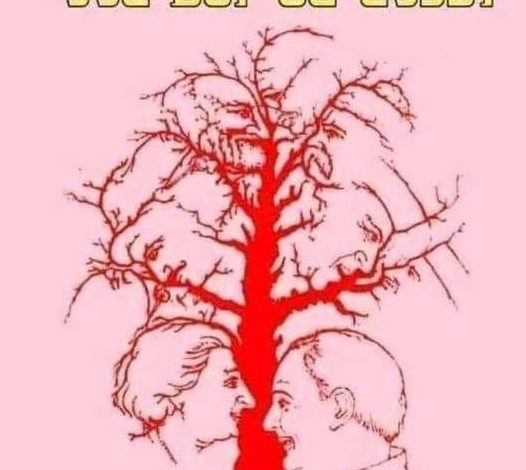The Fascinating World of Optical Illusions Analyzing I Saw 5 Faces How Many Do You See

ADVERTISEMENT
The Fascinating World of Optical Illusions: Analyzing “I Saw 5 Faces, How Many Do You See?”
Optical illusions have always intrigued and captivated the human mind, challenging our perception and making us question what we see. One such illusion is the image titled “I Saw 5 Faces, How Many Do You See?” This artwork combines artistic creativity with cognitive science to present a compelling visual puzzle.
The Artwork
The image depicts a tree with branches and roots that cleverly form human faces. The vibrant red color of the tree contrasts against a soft pink background, making the details stand out prominently. At the top of the image, a playful and engaging question is posed: “I Saw 5 Faces, How Many Do You See?” This question invites viewers to closely inspect the image, encouraging interaction and engagement.
Initial Perception
At first glance, the viewer might notice the two prominent faces at the base of the tree. These faces are more apparent because they are larger and located in a familiar position for human features. However, the challenge lies in identifying the other faces embedded within the branches and the tree trunk.
Deeper Analysis
Upon closer inspection, the image reveals several other faces ingeniously hidden in the intricate network of branches. The artist’s skillful use of lines and shapes creates a seamless integration of facial features with the natural elements of the tree. This clever design plays with our brain’s tendency to recognize faces, a phenomenon known as pareidolia.
Psychological and Cognitive Aspects
Optical illusions like this one leverage the brain’s pattern recognition capabilities. Our brains are wired to recognize faces, often interpreting random patterns as familiar shapes. This cognitive bias helps in social interactions and survival, making face recognition a crucial function. The tree illusion exploits this tendency, making it a delightful and thought-provoking experience.
The Impact of Color and Design
The choice of red for the tree is significant. Red is a color that attracts attention and evokes strong emotions. It stands out against the softer pink background, drawing the viewer’s eye directly to the tree and the hidden faces. The simplicity of the colors also prevents any distraction, allowing the viewer to focus solely on the task of identifying the faces.
ADVERTISEMENT
Engagement and Interaction
The question posed in the image encourages viewers to spend more time examining the artwork. This engagement is not just about finding the faces but also about appreciating the artist’s ingenuity and the brain’s perceptual processes. It becomes a shared experience, often leading to discussions and comparisons among viewers.
Art and Science Fusion
This optical illusion is a perfect example of the fusion between art and science. Artists like the creator of this image use scientific principles of human perception to craft visually captivating pieces. This intersection of disciplines not only enhances the aesthetic value of the artwork but also contributes to our understanding of cognitive functions.
Conclusion
“I Saw 5 Faces, How Many Do You See?” is more than just an optical illusion; it is a celebration of human perception and creativity. It challenges our minds, engages our senses, and offers a glimpse into the fascinating world of cognitive psychology. Next time you encounter an optical illusion, take a moment to appreciate the intricate balance of art and science that makes these visual puzzles so compelling.
I hope this detailed analysis and description meet your requirements. If you need any further customization or additional sections, please let me know!
ADVERTISEMENT
4o




